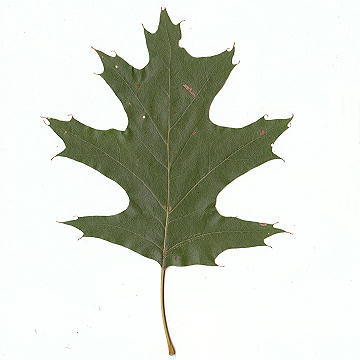

Quercus velutina - (image 1 of 5)
Taxonomy
Family: Fagaceae
Habitat
Dry or sterile upland soil and dunes.
Associates
Distribution
Southern ME west to MI and southeast MN, south to FL and TX.
Morphology
Deciduous tree to 40 m high; bark very dark, rough; inner bark yellow or orange. Leaves glossy, shallow to deeply lobed, pubescent on the vein-axils below; terminal buds 4-angled and densely hairy, 7-10 mm. Acorns 1.5-2 cm; cup turbinate, covering 1/2 the nut, wholly hairy inside; scales few, large, and pubescent, the uppermost loose and forming a marginal fringe.
Notes
Flowers April to early June
Wetland indicator: Upland
A common hybrid with Quercus rubra is called Q. x hawkinsiae Sudw. It is similar to Red Oak in most respects but with leaves that are more deeply cut and slightly angular buds with scales that are densely pubescent near the tip.
References
Gleason, Henry A. and A. Cronquist. 1991. Manual of Vascular Plants of Northeastern United States and Adjacent Canada. Second Ed.
The New York Botanical Garden. Bronx, NY
Illinois Department Natural Resources. December 1995. Common Illinois Trees
IDNR Educational Services: Project Learning Tree.
Swink, F. and G. Wilhelm. 1994. Plants of the Chicago Region.
Indiana Academy of Science. The Morton Arboretum. Lisle, Illinois.
|
Michael Hough © 2005 |